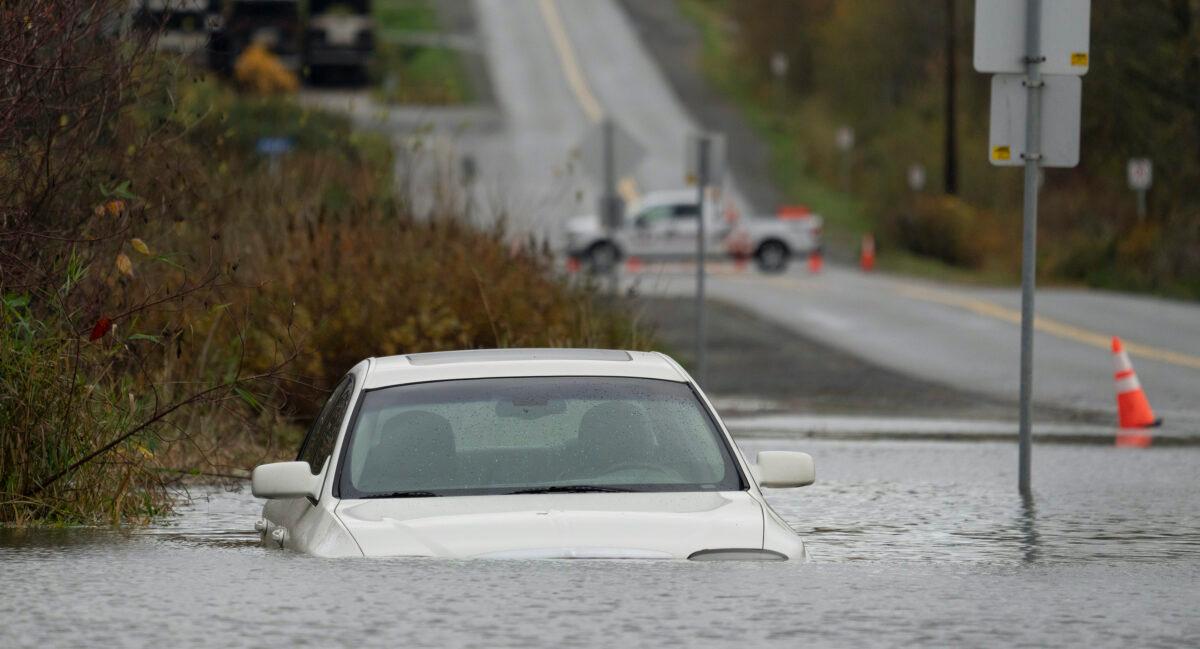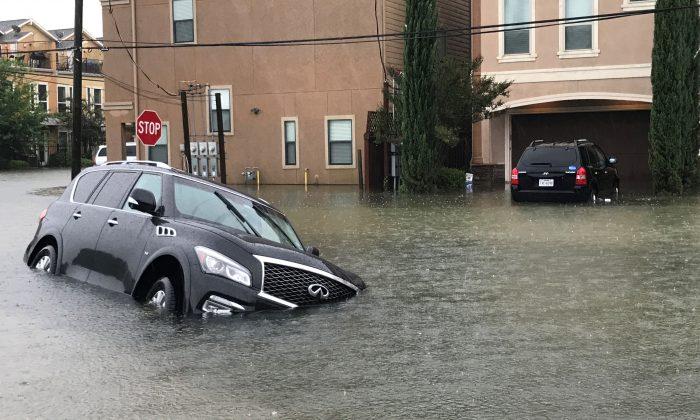Fortunately, there were no reported vehicles in transit on Baltimore’s Francis Scott Key Bridge when it collapsed on Tuesday at 1:28 a.m., after container ship Dali struck a support tower.
At the time of writing, rescuers are still searching for construction workers who were working on the bridge when it fell into the Patapsco River. According to an update from the Baltimore State Police, divers did recover the bodies of two of the construction workers from a red pickup truck found 25 feet deep into the river.
Many agree that this tragedy could have been much worse had it taken place during the peak rush hour traffic when vehicles would have been thrown into the river.
Had this been the case, what then do the people in the vehicles do when they find themselves entering the water?
Professor Gordon Giesbrecht spoke with The Epoch Times about his team’s numerous harrowing experiments to study this exact scenario.
Professor Giesbrecht is a senior scholar with a doctorate in physiology who works in the Kinesiology and Recreation Management department at the University of Manitoba in Winnipeg, Canada.
His decade-long study involved driving, pushing, or lowering up to 50 vehicles into the depths of the water with a crane, with him and others inside, each accompanied by two oxygen tanks. They were then left to figure out how to escape.
SWOC
Based on these experiments, Professor Giesbrecht and his team devised the escape protocol he’s been working to standardize: SWOC, which stands for Seat Belts Off, Windows Open, Out Immediately, and Children First.“A challenge in my business is coming up with information to save lives,” he said. “The other challenge is getting that information out there so people know what to do.”
Any vehicle when in water, he said, is “a boat with a big leak.” As it sinks, water pushes the doors shut, he explained.
‘Rapidly Deteriorating Situation’
The mistake many people make is to reach for their phones, a mistake 50-year-old billionaire Angela Chao made in February when she backed her Tesla Model X into a pond at her ranch in Johnson City, Texas, 40 miles from Austin.Angela Chao, was the CEO of the global shipping company Foremost Group and the sister of Elaine Chao. Elaine Chao served as the U.S. Secretary of Labor under President Donald Trump and is married to U.S. Senator Mitch McConnell.
Angela Chao had been celebrating the Lunar New Year with friends.
According to a Wall Street Journal report, friends and emergency responders tried to get her out, but couldn’t break the laminated glass in the side windows, a recent feature in vehicles that was added to prevent drivers from being tossed out in a collision; however, this feature makes the glass close to impossible to shatter, especially when submerged in water.
“Vehicle submersion has one of the highest fatality rates of any type of single vehicle accident,” he writes in the study. “Most of these incidents are survivable, as vehicles usually hit the water in an upright position, causing, at most, non-disabling injuries; in these cases death results from either ineffective or no self-rescue actions by the victim(s).”
Protocols for escape have been “either nonexistent or ineffective” in dealing with what can be a “rapidly deteriorating situation.”
Ms. Chao, like many, didn’t know about SWOC, so she called a friend, and someone else called 911.
By the time the first responders arrived, the vehicle was completely submerged. When the vehicle was finally towed from the water and opened, it was reported that “hundreds of gallons rushed out,” and that Ms. Chao was deceased.
The criminal investigation into the accident ended with the toxicology screen reporting a blood alcohol level of 2.33, according to the Austin American-Statesman, which is three times the state’s 0.8 legal driving limit.
The accident drew scrutiny over Tesla’s gearshift design, which Ms. Chao had reportedly claimed made it easy to confuse drive with reverse.

‘A Sobering Thought’
However, it doesn’t matter what kind of vehicle a person drives, the dangers and protocols for vehicle submersion are the same, according to Professor Giesbrecht.“It’s a sobering thought,” he said.
Individuals can have all the money in the world, Professor Giesbrecht said, but if a person doesn’t know to unbuckle a seat belt and open the window, “it makes no difference.”
If someone hasn’t heard of SWOC, they might be prone to making several mistakes, such as using a phone, attempting to keep the window closed to prevent water from coming in, or wasting time and effort in trying to open the door, he explained.
“When we’re under stress and don’t have the information or training, we do strange things,” he said. “There are a lot of stress responses ranging from a small percentage of people doing the right thing, a large percentage of people who do things that don’t make any sense, and another percentage of people who do nothing.”
He said he’s seen cases in which people were found drowned sitting in their vehicles with their seat belts still buckled, though the person was uninjured and could have escaped.
“The bottom line is you can’t get out of your vehicle unless your seat belt is unbuckled, which is why you do that first,” he said. “Your windows are second. As the vehicle tilts forward your rear windows will be out of the water longer than the front windows. If you have an SUV the back hatch will be out of the water longer than anything else and of course you can’t get out of that unless you have your seat belt off, so, the seat belt first.”
That gives the person the option to open the windows that are not yet underwater, he added.
It doesn’t matter that the windows are laminated, he said, because once the seat belt is off, the person just needs to hit the window button, which, according to his studies, will still work for at least a minute.

‘Extremely Simple’
There are three phases of the vehicle sinking, he said.“The first phase, called floating, includes the time from when you hit the water until the water rises to the bottom of the windows,” he said. “This is the only phase in which you can actually get out. Then we call it sinking after that, when the water goes higher, in which case you can’t open the window because of the pressure against it.”
It’s “too late” once the car reaches this second stage, he said.
“You’re dead,” he said. “You’ve got a one-minute window of opportunity ... in which it only takes a few seconds to actually unbuckle your seat belt and open the window. If you miss that, your odds of survival approaches zero.”
One only needs two tools, he said, one’s mind and finger.
“Your brain tells your finger to push the electric window button,” he said.
“This isn’t a story about, if you don’t dry your hair after you get out of the shower you’re going to catch a cold, which is incorrect,” he said. “If you get that message wrong, who cares?”
However, SWOC is a message that would be fatal to forget.
“The tool to survive is not a tool but information, which is great, because as soon as you tell somebody, they’re now equipped to save their own life,” he said. “They don’t have to go to the store to buy something or take a course. They just need to remember to open their windows and get out.”







